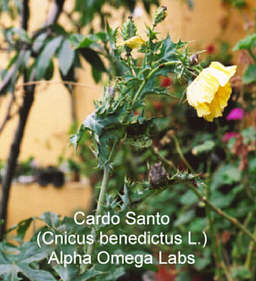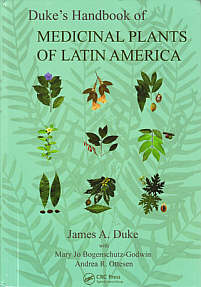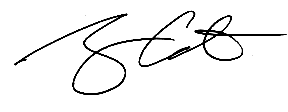
If you have any questions or comments concerning anything you read on
this page, please email us.
Disclaimer: None of the content herein is intended to convey that any particular product can diagnose, treat, cure or prevent any disease.
Disclaimer: None of the content herein is intended to convey that any particular product can diagnose, treat, cure or prevent any disease.
Indigenous Traditional : Defined
- The herbs and/or formulas so named are prepared by Alpha Omega Labs in the exact manner in which they have been made for generations by the indigenous sources from which we have obtained them -- the only modification being enhancements in sanitary procedures, production processes, or other methodologies to meet our Good Manufacturing Practices standards. For certain formulas, a preservative, such as alcohol, H3O, or hydrogen peroxide (external) is added to the "traditional," as shelf-life considerations are rarely a major concern in most indigenous settings, because the product is made and used fresh. (AO Labs runs a certified lab and is registered with the Ministry of Sanitation in Ecuador -- this country's equivalent of the U.S. Food & Drug Administration). [ 1 ]
- The medical properties described on any given product page on our site, including the protocols provided, is a presentation of the historic, ethnobotanical use of that item. Customers should understand that none of the products in this category have been clinically tested in the Western sense. We are merely providing our customers with all relevant information as to how the product is used -- both at the present time and for countless generations, indeterminable in number, preceeding our introduction.
- None of the products under this category have been tested or approved by the U.S. Food & Drug Administration -- nor it is remotely thinkable that with the infusion of billions of dollars, would they ever. They cannot be patented. They cannot be used to secure a marketing monopoly. They cannot be marketed successfully without inviting competition. NONETHELESS, the products in this category have their equivalents that can be found in various farmers' markets all over Ecuador. Their availability is made possible through Article 360 of the new Ecuadorean Constitution, which protects the availability and sale of traditional, indigenous medical plants and plant products.
- To U.S. Users: On account of the U.S. FDA status indicated in the above paragraph, U.S. customers can purchase this product for experimental purposes only. These products cannot be used to diagnose, treat, cure, or prevent any disease and are not represented as such to any user in the U.S.
- For those herbal sources, where the primary species or subspecies is unknown or in dispute, we do not provide the scientific (taxonomical) name -- but, as is customary in Ecuador, provide the local common name of the plant used only.

Footnotes

- Different authorities use varied ways of classifying
medicinal herbals at this level. The term used by James A. Duke, for instance,
is "folklore." He has a four-grade system of classification for "the level of efficacy of
that activity," wherein "that activity" relates to one particular medical
indication or property of the species of plant in question. It read
like this:
- f: strictly folklore
- 1: some animal, epidemiological, in vitro, or phytochemical studies support the efficacy (I actually feel that in many cases f may be better than 1)
- 2: extracts of plant approved by Commission E, by the TRAMIL Commission, or demonstrated by human clinical trials . . . and a very rare :
- 3: herb itself clinically proven in human trails "
 Additionally, Duke provides a scoring element
called "Father Nature's Food Farmacy" (FNFF), originally taken from the CRC Handbook of Medicinal Herbs
Here is the FNFF scoring pattern:
Additionally, Duke provides a scoring element
called "Father Nature's Food Farmacy" (FNFF), originally taken from the CRC Handbook of Medicinal Herbs
Here is the FNFF scoring pattern:
- FNFF: X. I found nothing credible suggesting the plant as food.
- FNFF: ?. Very questionable survival food.
- FNFF: !. Survival food or little known but locally important; not in U.S. supermarkets.
- FNFF: !!. Important food in some parts of the world; not in major supermarkets.
- FNFF: !!!. Important enough in the world to be in many U.S. supermarkets.
 I pick
James Dukes's 900-page tomb in this
subject for two reasons: (1) it directly relates to the species of medicinal plants in which
Alpha Omega Labs is most directly involved, (2) James Duke is considered a leading botanical authority.
I pick
James Dukes's 900-page tomb in this
subject for two reasons: (1) it directly relates to the species of medicinal plants in which
Alpha Omega Labs is most directly involved, (2) James Duke is considered a leading botanical authority.
 As much as I respect Duke for his erudition,
I take serious issue with the subtle degradations of folklore medicine throughout
his work. Perhaps he feels the need to do this as a literary form of genuflecting
before his colleagues in the scientific community. In several places through my unfinished
book, Meditopia®, I make
the point that the world is awash in worthless herbal formulas and theories that supposedly
support their use -- but then this is useful to orthodoxy as a perverse application of
"Gresham's Law." By encouraging the influx of the bad, you automatically drive out the good.
If you can convince a critical mass of the public that natural remedies have little or
no efficacy, you remove a major hurdle to strengthening your argument that pharmaceuticals are the answer.
And in this observation we have yet another manifestation of the suppressive
role of authority that I quote numerous times throughout my own work: "Always beware
respectable people because they are beholden to those institutions that are the source
of that respectability."
As much as I respect Duke for his erudition,
I take serious issue with the subtle degradations of folklore medicine throughout
his work. Perhaps he feels the need to do this as a literary form of genuflecting
before his colleagues in the scientific community. In several places through my unfinished
book, Meditopia®, I make
the point that the world is awash in worthless herbal formulas and theories that supposedly
support their use -- but then this is useful to orthodoxy as a perverse application of
"Gresham's Law." By encouraging the influx of the bad, you automatically drive out the good.
If you can convince a critical mass of the public that natural remedies have little or
no efficacy, you remove a major hurdle to strengthening your argument that pharmaceuticals are the answer.
And in this observation we have yet another manifestation of the suppressive
role of authority that I quote numerous times throughout my own work: "Always beware
respectable people because they are beholden to those institutions that are the source
of that respectability."
 It is for this reason that I am loath, even when I have
the support to make the claim, to draw the pistol from my holster marked, "scientifically proven" . . .
simply because SCIENCE is ultimately not about the quest for TRUTH. It is about upholding
the CONSENSUS of an occupational Elite that exists to tell the unwashed masses what
they may or may not believe. Because money -- and money alone -- is the ultimate coin of our current Age,
there can be no Truth that is not filtered through the prerogatives of moneyed interests.
Science -- as we know it and use the term -- has suppressed more legitimate, provably
knowledge, than it has ever granted an imprimatur, going back to the days of Francis
Bacon, who gave it its current shape and form.
It is for this reason that I am loath, even when I have
the support to make the claim, to draw the pistol from my holster marked, "scientifically proven" . . .
simply because SCIENCE is ultimately not about the quest for TRUTH. It is about upholding
the CONSENSUS of an occupational Elite that exists to tell the unwashed masses what
they may or may not believe. Because money -- and money alone -- is the ultimate coin of our current Age,
there can be no Truth that is not filtered through the prerogatives of moneyed interests.
Science -- as we know it and use the term -- has suppressed more legitimate, provably
knowledge, than it has ever granted an imprimatur, going back to the days of Francis
Bacon, who gave it its current shape and form.
 It was only with the help of Thomas S. Kuhn's famous monograph,
"The Structure of Scientific Revolutions" (1963) that I was able to create a series of structured
arguments to prove -- with the same logical sequence that a high school math student
uses Euclidean theorems to prove a geometrical proposition -- that science is a religion
that supports more provably-false, twisted ideas than the most fanciful tales of Greek mythology.
These arguments begin in Chapter 4, Section 3
of Meditopia®.
It was only with the help of Thomas S. Kuhn's famous monograph,
"The Structure of Scientific Revolutions" (1963) that I was able to create a series of structured
arguments to prove -- with the same logical sequence that a high school math student
uses Euclidean theorems to prove a geometrical proposition -- that science is a religion
that supports more provably-false, twisted ideas than the most fanciful tales of Greek mythology.
These arguments begin in Chapter 4, Section 3
of Meditopia®.
 Returning back to the subject of botanical
and phytopharmacology, I can say that I have encountered more legitimate cures
in the jungles of the Amazon -- told to me by people who have no alphabet -- than
I ever encountered in my own Western culture.
Returning back to the subject of botanical
and phytopharmacology, I can say that I have encountered more legitimate cures
in the jungles of the Amazon -- told to me by people who have no alphabet -- than
I ever encountered in my own Western culture.
 None of this is meant to degrade the crucial
role of validation through well-designed clinical tests . . . but I maintain that
"folklore medicine" that has proven itself over and over again over
many generations of use should be upheld as a "respected" starting point.
None of this is meant to degrade the crucial
role of validation through well-designed clinical tests . . . but I maintain that
"folklore medicine" that has proven itself over and over again over
many generations of use should be upheld as a "respected" starting point.

Greg Caton --- Founder
Alpha Omega Labs
Guayaquil, Ecuador
- f: strictly folklore